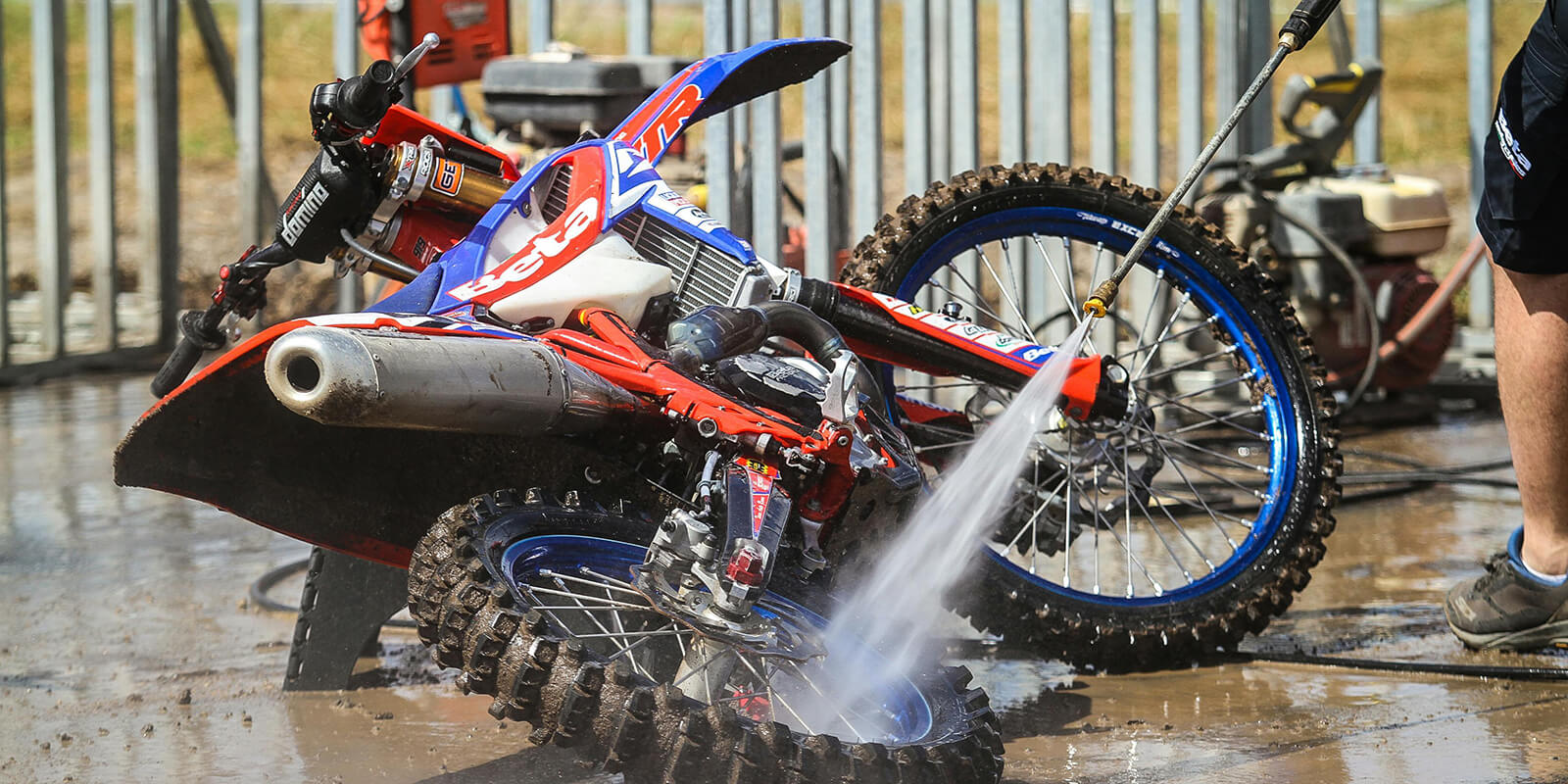
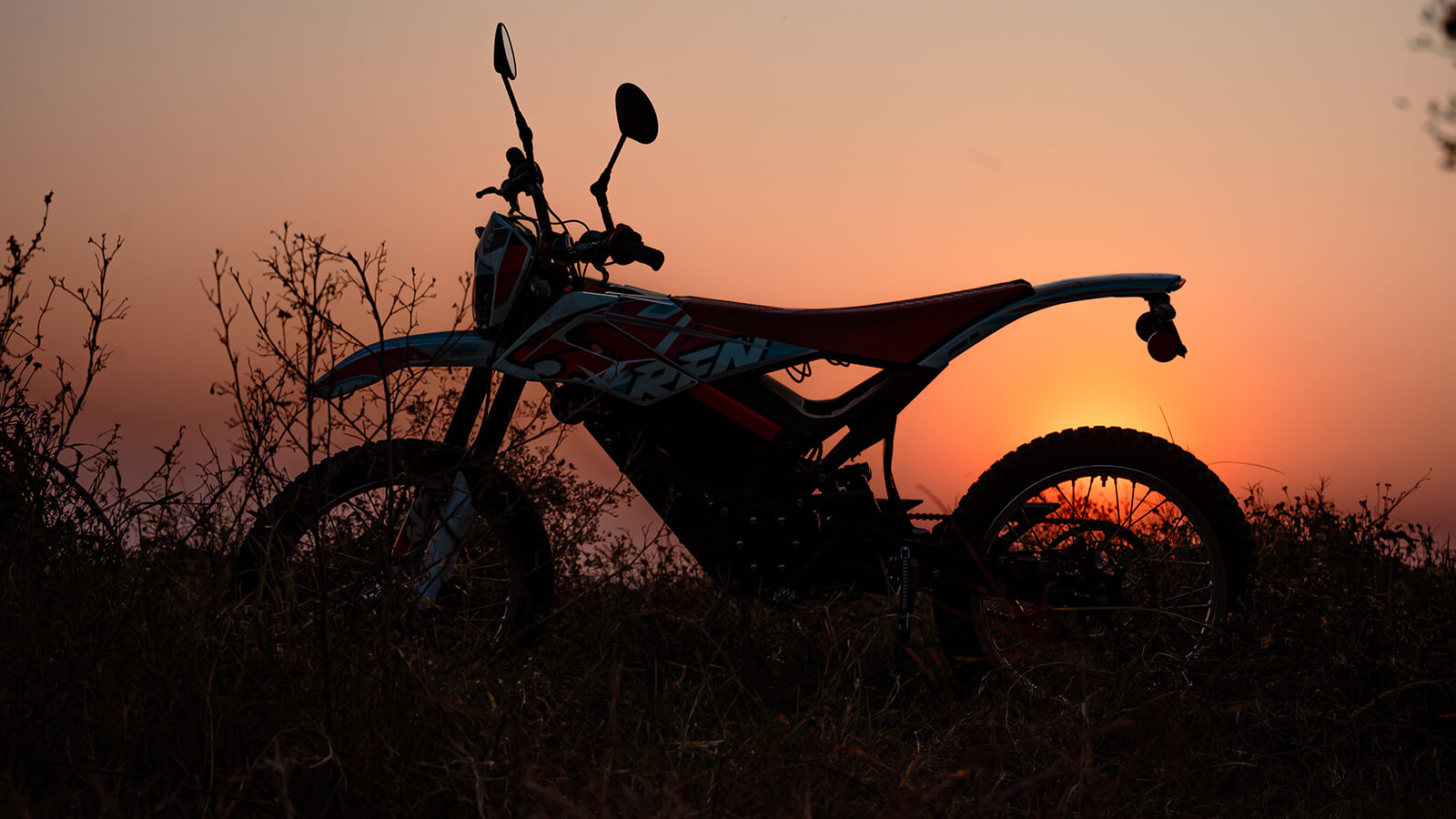
Dirt bikes are designed to endure extreme conditions that standard motorcycles never encounter. From muddy trails to dusty tracks, every ride subjects your bike to intense stress.
Regular maintenance is the foundation of your dirt bike’s performance, safety, and longevity. Smart maintenance practices protect both your investment and your riding experience.
In this blog, we provide some tips on maintaining a dirt bike so you can keep your bike in tip-top shape for many years.
Modern dirt bikes are sophisticated machines with complex systems working in harmony. What happens if you neglect the upkeep of your bike? Apart from annoying engine noise, signs of rust, stalling, and a generally poor riding experience, other consequences include:

Nothing beats the satisfaction of cleaning your dirt bike after a great ride. Beyond just keeping your bike looking good, a proper wash helps you spot potential issues before they become real problems on your next adventure.
Begin with the chain – it’s the heart of your bike’s performance. A good chain cleaner and brush will remove the grime that’s been building up during your ride. While the mud is still fresh, give your bike a thorough rinse with the hose. This simple step saves you from wrestling with dried-up dirt later.
Next, reach for your bio-degradable cleaner. Give your bike a good spray, letting the cleaner work its magic on those stubborn spots. Take your time scrubbing the areas where dirt likes to hide – your future self will thank you for the attention to detail.
Got some hard-to-reach spots? This is where a pressure washer comes in handy. Just keep a safe distance to protect your bike’s sensitive parts. Once clean, grab a rag and dry everything thoroughly – wet metal and bearings aren’t a great combination.
With your bike clean, take a few minutes to look it over. Check for loose bolts, damaged spokes, or any leaks. These quick checks can save you from unwanted surprises on your next ride.
If you’re storing your bike for a while, give it some extra care with polish and lubricant. Think of it as basic protection that keeps your bike ready for your next riding day.
In addition to cleaning your bike after every ride, here is a list of other important maintenance tasks that need attention.
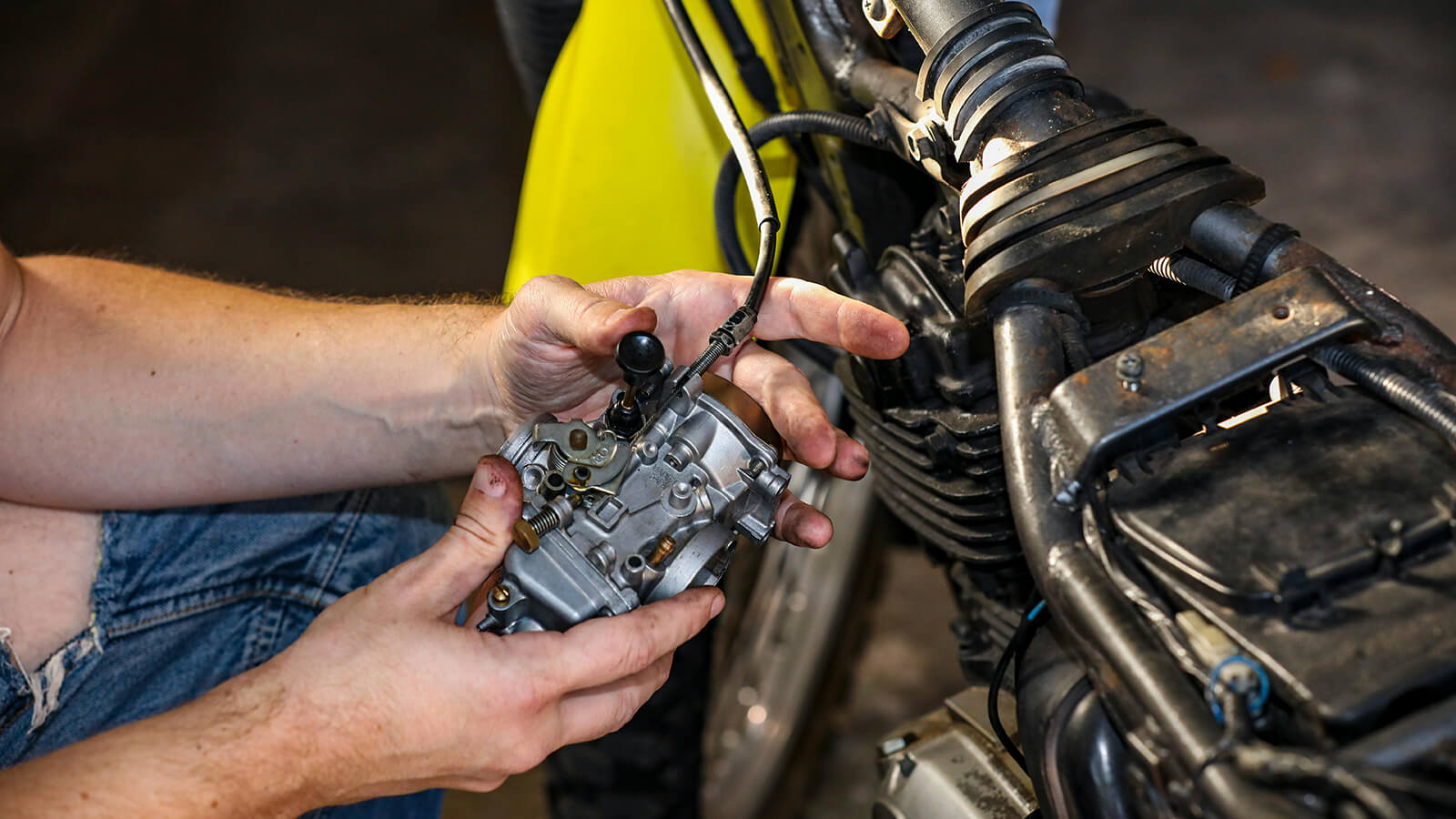
Engine oil is the lifeblood of your dirt bike. Dirt bikes require frequent oil changes due to intense operating conditions and exposure to contaminants. Fresh oil maintains proper lubrication, prevents engine wear, and ensures optimal performance. Check oil levels before each ride and change oil based on your manual’s recommendations and riding conditions.
All dirt bike riders know air filters get clogged with silt and sand. A clogged air filter can’t allow enough air through for fuel combustion, so the engine has to work twice as hard.
How much you ride, the terrain and the conditions will determine how often you need to replace the air filter. If you are a casual rider, cleaning the filter after every second ride should be enough. If you take your bike out in dusty or muddy conditions, you need to clean it after each ride. Depending on the conditions, you may have to replace it after every ride.
First, remove all the dirt and gunk, then spray the filter with a special cleaner. Leave it on for a few minutes before rinsing it off with water. Let it dry completely before reinstalling it.
Motocross bike maintenance includes suspension tuning. A well-tuned suspension system is crucial for motocross riding. The suspension system determines how the bike will handle rough terrain. An optimized suspension system is essential for proper shock absorption and easy handling of the bike.
If you are a rider who revels in jumps, sharp turns and general rough riding, you need to maintain and adjust your suspension system.
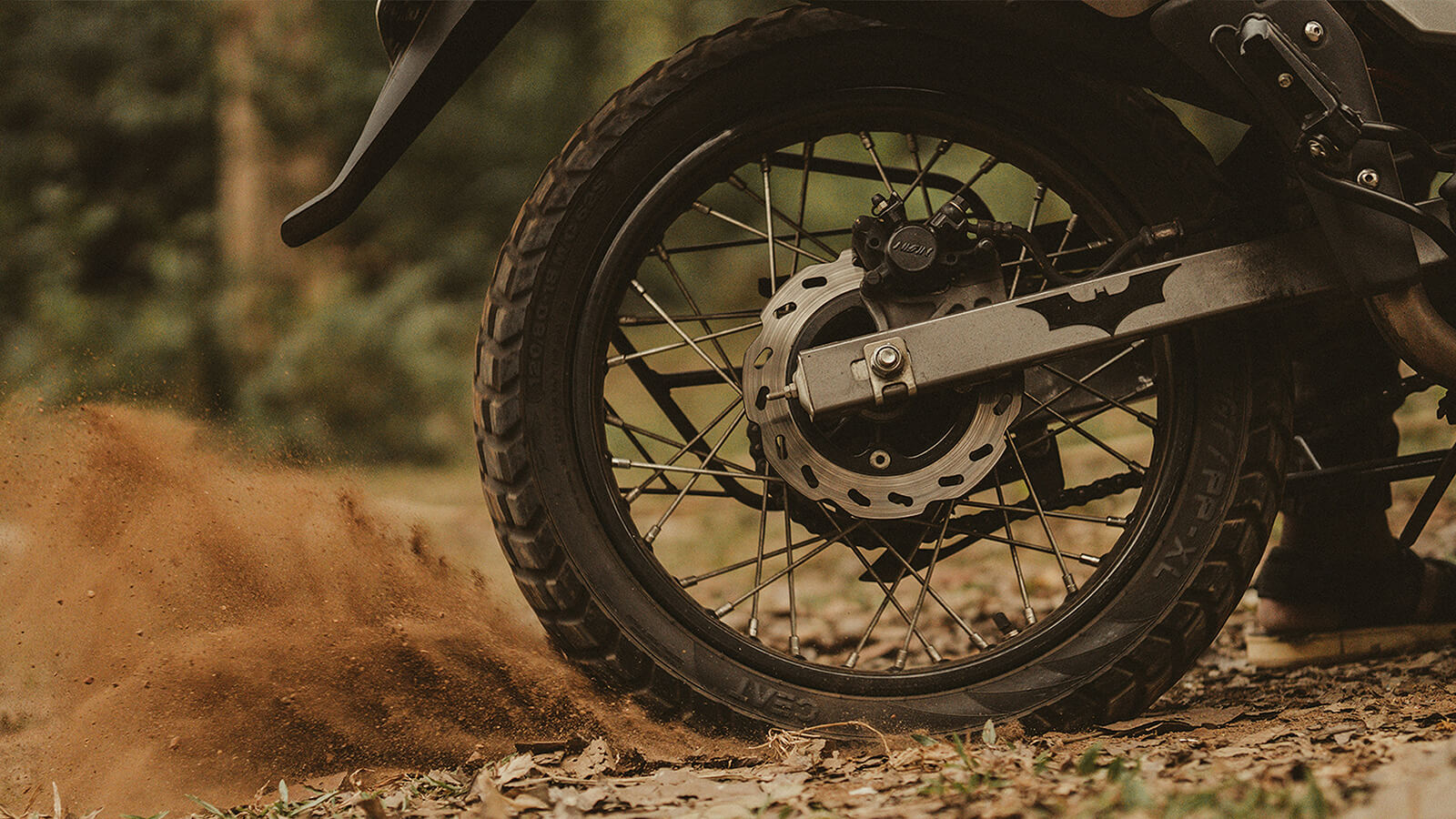
The wheels and tires of a dirt bike also require your attention. To ensure reliable performance on rough terrain, regularly inspect the tires for proper pressure, and signs of wear, punctures, or cracks.
Check if the wheel components are in good order and properly fastened. At the same time, ensure the wheel bearings are clean and lubricated so they rotate smoothly.
Keeping wheels and tires in optimum condition extends their lifespan and contributes to safe riding.
No, checking the chain and chain tension is crucial. Dirt bike chain maintenance involves two aspects: keeping the chain lubricated and at the correct tension. Keep the chain lubricated to minimize friction between the moving parts, boosting the bike’s performance.
Getting the tension right is crucial. If it is too loose the chain can fall off the sprockets, and if it is too tight, it can break, causing an accident. A dirt bike mechanic can help you to establish the proper chain tension. Or you can consult the owner’s manual.
Remember to lubricate the chain after each ride.
Brake pads tend to wear down from continuous friction with the rotor. For instance, rough riding, aggressive braking, and muddy conditions can introduce debris into the braking system, causing it to become worn.
Rinse and wipe down the brakes and brake pads after every ride, especially if your adventure was in muddy or sandy conditions. Check the brakes for signs of thinning, uneven wear, or embedded debris, and replace them when worn down to 1-2 millimeters.
Dirt bike sprockets work with the chain to transfer power from the engine to the wheels, taking on a lot of wear and tear.
Regularly check both front and rear sprockets for signs of damage or tooth misalignment. If the teeth don’t line up perfectly or look crooked, you need to replace the sprocket. It’s best to replace the sprockets and chain as a unit.
If you are conscientious about dirt bike maintenance, and regularly clean and lubricate the bike chains, you won’t need to replace the chain and sprockets frequently.
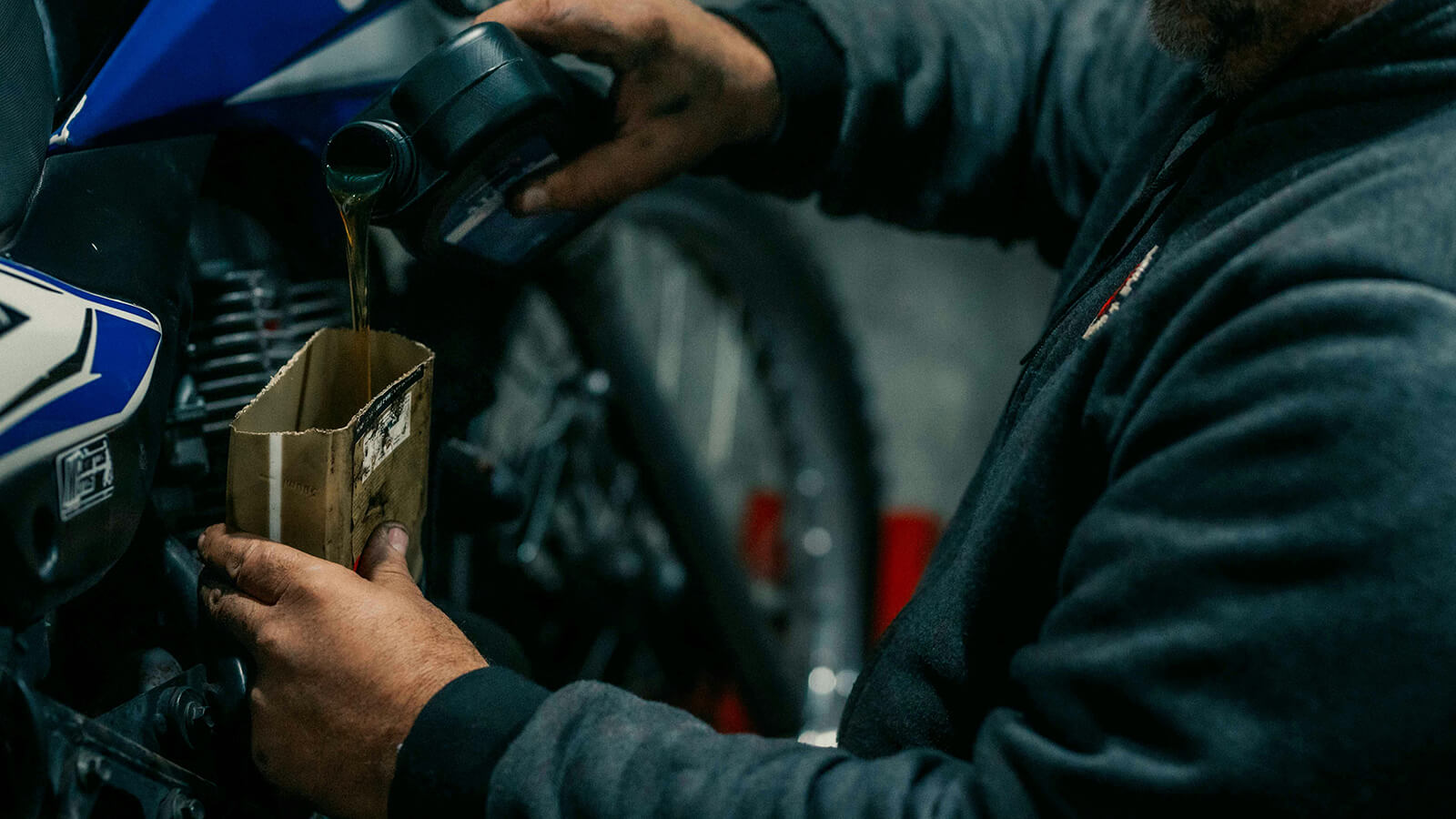
Your dirt bike needs more than just engine oil to perform at its best. Before each ride, take a few minutes to check these essential fluids:
Your brake fluid level directly impacts stopping power – check the reservoir and look for any discoloration. Keep an eye on your radiator coolant to prevent overheating, and ensure your fork oil is clean for smooth suspension performance. Don’t forget the brake cylinder oil – it’s crucial for proper brake function.
Making these quick fluid checks part of your pre-ride routine helps prevent problems before they start and keeps your bike running safely on the trails.
Maintaining a dirt bike is essential to ensuring many years of off-road adventures. Staying on top of dirt bike maintenance by regularly checking, repairing, and replacing fluids, and worn components, you’ll get the best performance from your bike. Besides, routine care can save you loads of money down the line.
As a trusted manufacturer in the off-road motorcycle industry, Appolino understands the importance of proper maintenance for optimal performance. We’re committed to providing dealers, retailers, and distributors with quality wholesale dirt bikes.
Whether you’re a dealer stocking our bikes or a rider enjoying them, remember that regular maintenance is the key to unlocking your dirt bike’s full potential and longevity. Trust Appolino for quality off-road motorcycles that stand the test of time with proper care.
APOLLINO stands at the forefront as a top-tier manufacturer specializing off-road motorcycles, with the aim to spread its network worldwide. Join hands with our fantastic team. You can get instant quotes and order deliveries with the best quality products.
Connect with us today to join the ride towards innovation and explore the thrilling world of off-road adventures!